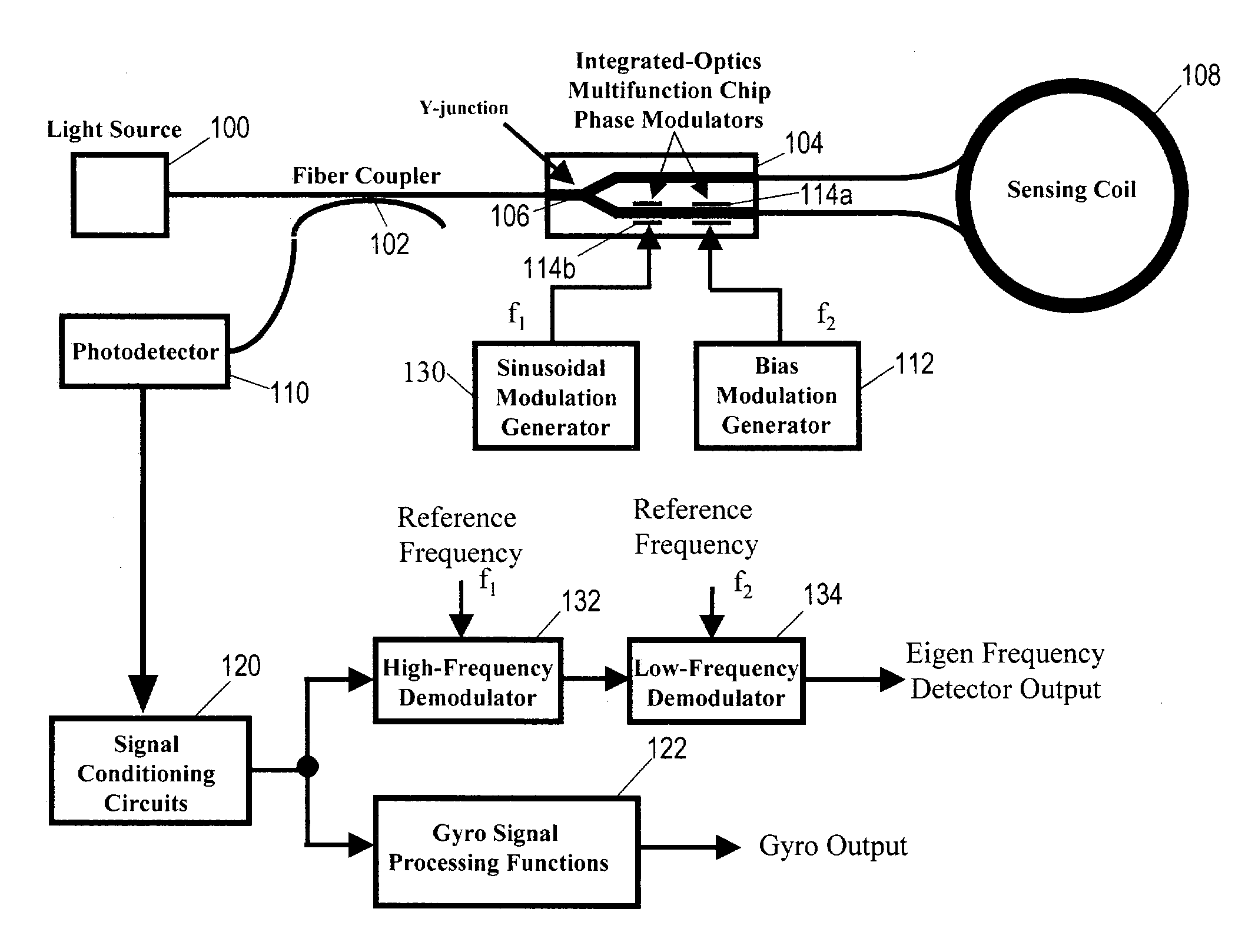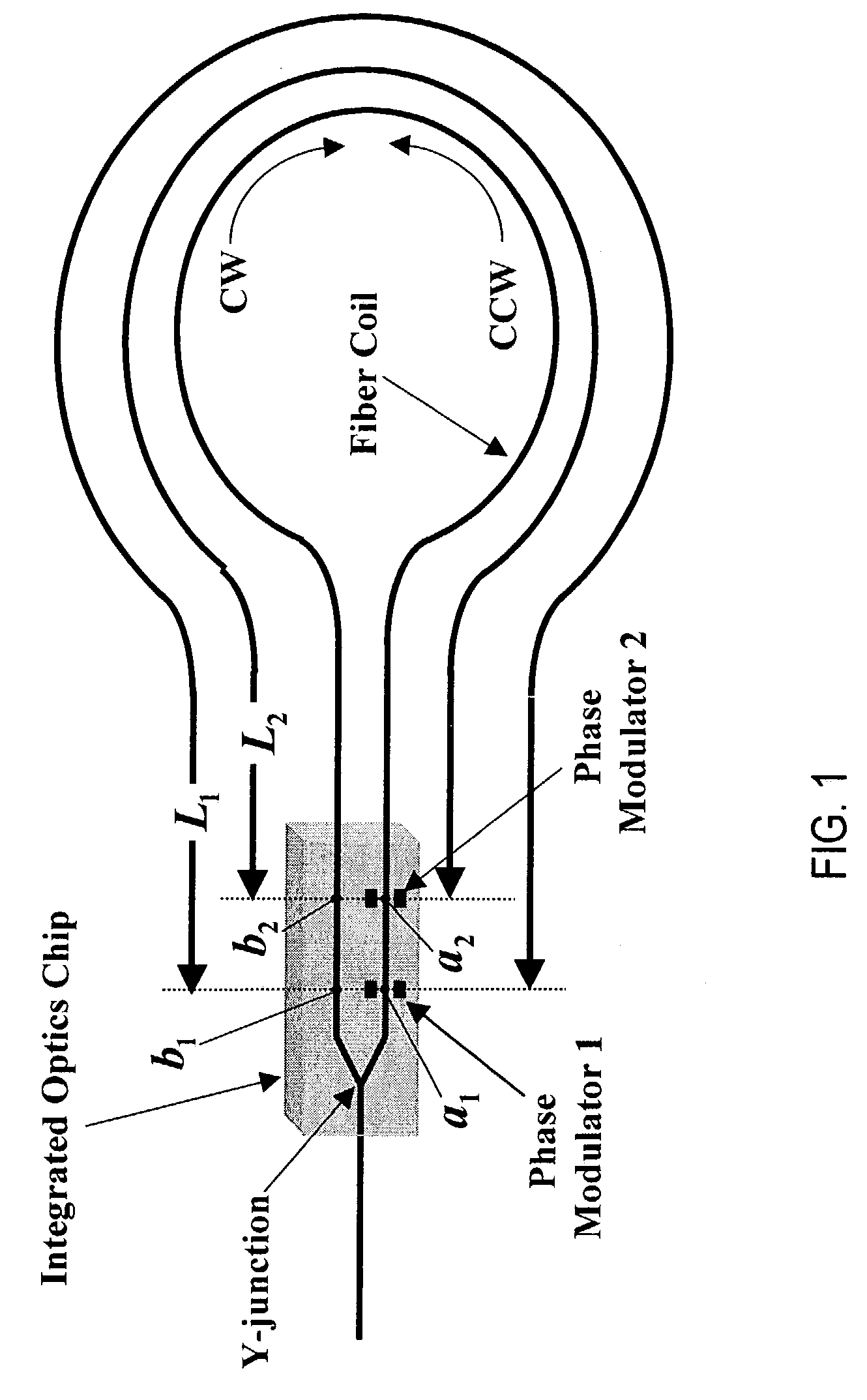Eigen frequency detector for Sagnac interferometers
a technology of sagnac interferometer and eigen frequency detector, which is applied in the direction of speed measurement using gyroscopic effects, instruments, surveying and navigation, etc., can solve the problems of crystal oscillator drift, large testing area, accuracy limitations,
- Summary
- Abstract
- Description
- Claims
- Application Information
AI Technical Summary
Benefits of technology
Problems solved by technology
Method used
Image
Examples
Embodiment Construction
[0022]The present invention provides an improved method for detecting the coil eigen frequency during normal gyro operation. This improved method involves the use of an additional phase modulation applied to the light waves propagating through the sensing coil. The additional phase modulation generates an “error” signal that is proportional to the frequency difference between the gyro operating frequency and the eigen frequency. A servo loop controls the gyro operating frequency to the eigen frequency by driving the “error” signal to a null.
[0023]FIG. 1 shows a diagram of a sensing coil and an integrated optics chip with phase modulators to help describe the concept of an eigen frequency associated with a phase modulator. The entire optical loop comprises the optical path from the y-junction, through the integrated optics chip, through the fiber coil, and returning back through the integrated optics chip and to the y-junction. If a phase modulation is applied at point a1 within the ...
PUM
 Login to View More
Login to View More Abstract
Description
Claims
Application Information
 Login to View More
Login to View More - R&D
- Intellectual Property
- Life Sciences
- Materials
- Tech Scout
- Unparalleled Data Quality
- Higher Quality Content
- 60% Fewer Hallucinations
Browse by: Latest US Patents, China's latest patents, Technical Efficacy Thesaurus, Application Domain, Technology Topic, Popular Technical Reports.
© 2025 PatSnap. All rights reserved.Legal|Privacy policy|Modern Slavery Act Transparency Statement|Sitemap|About US| Contact US: help@patsnap.com



